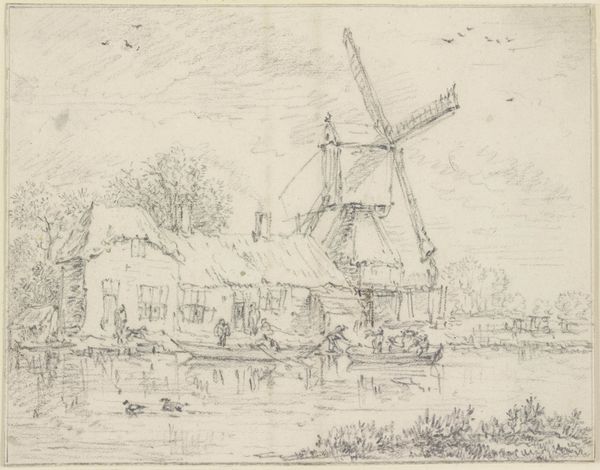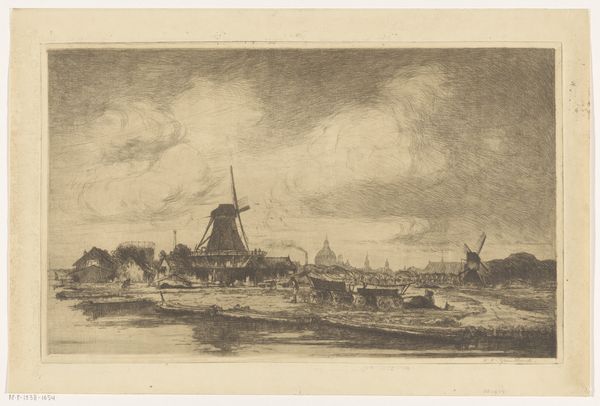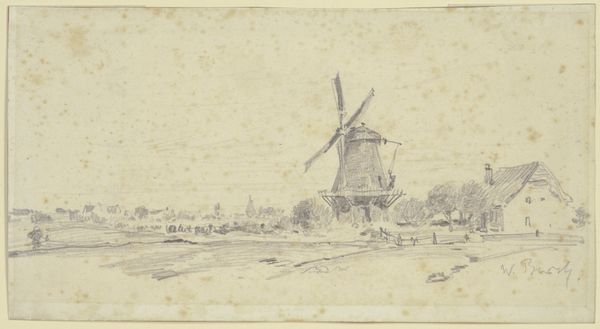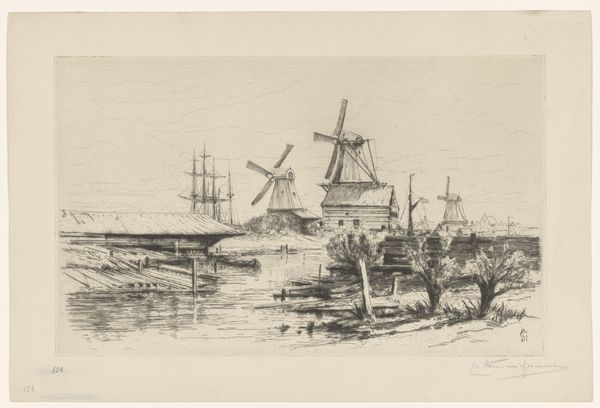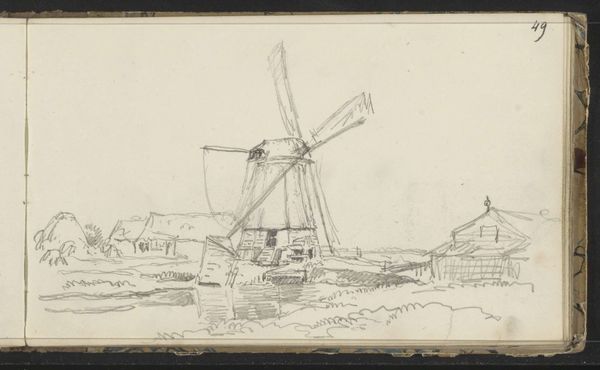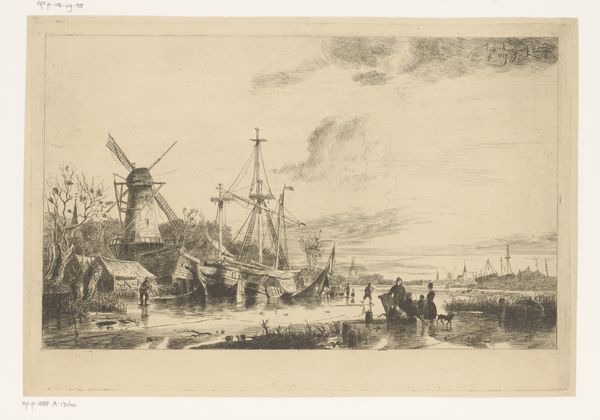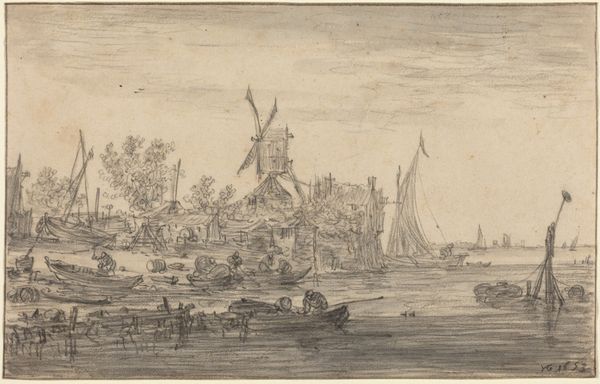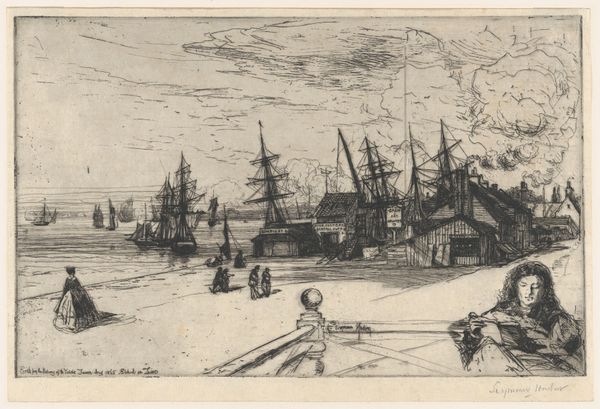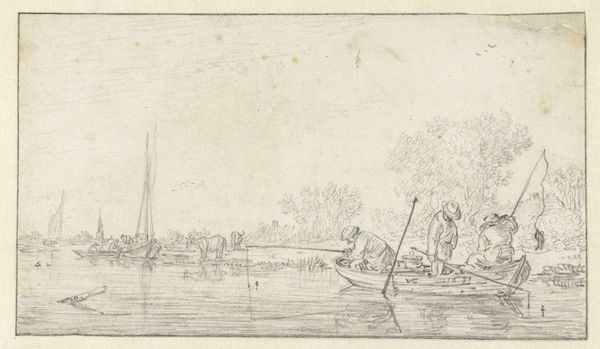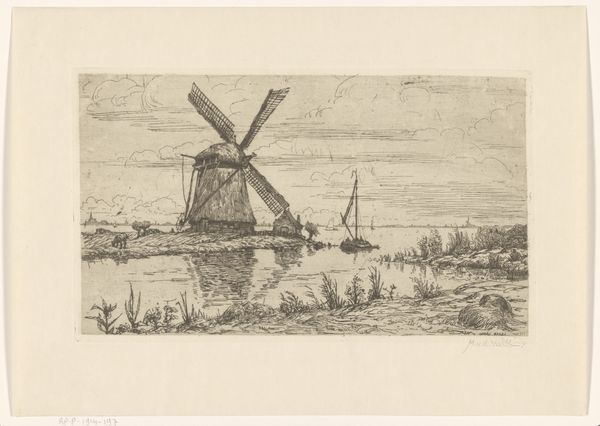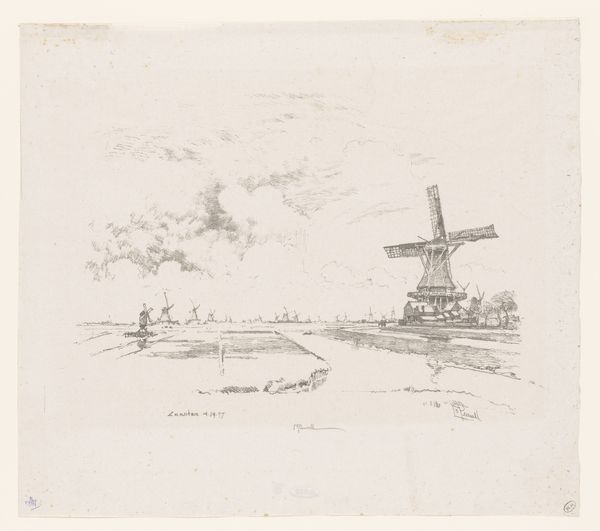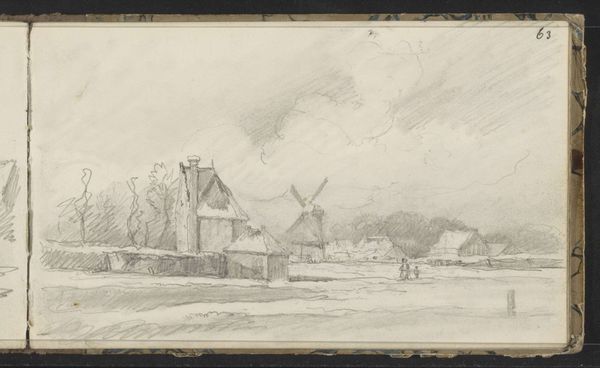
drawing, pencil
#
drawing
#
aged paper
#
toned paper
#
sketch book
#
incomplete sketchy
#
landscape
#
personal sketchbook
#
romanticism
#
pen-ink sketch
#
pencil
#
sketchbook drawing
#
watercolour illustration
#
sketchbook art
#
watercolor
Copyright: Rijks Museum: Open Domain
Curator: Looking at "Molen aan een vaart", a drawing by Arnoldus Johannes Eymer from around 1803 to 1818, one is immediately struck by the atmospheric quality achieved with what appears to be simple pencil and watercolor. What do you make of this composition? Editor: It feels melancholic, almost haunted. The landscape is sparse, the details are just impressions. There’s a story being hinted at, rather than told outright. I am captured by the aged paper; this lends the scene the sense of time passing. Curator: Precisely. The sketch-like quality lends itself to this air. It avoids the picturesque. Instead, we see the underlying structure; the spatial relationships are established primarily through tonal variation. Consider how the artist guides the viewer’s eye to the windmill—a focal point through its relative size and the contrast it presents against the pale sky. Editor: It's so evocative, even unfinished. Like finding a faded photograph in an attic. The bareness also makes it universally resonant, doesn't it? A sense of the human element set against something timeless and immense. Curator: Indeed. Eymer demonstrates the power of suggestion through deliberate omission. The negative space is as significant as the drawn elements. The sparseness and incompleteness draw attention to line, shadow, and the inherent qualities of the materials. Editor: Absolutely, this isn't just about representing a landscape; it’s about conveying feeling. You can almost feel the damp air coming off the water, see the movement of clouds across that muted sky. I can smell that distinctive earthiness emanating from that windmill. I'm also amused by the people seemingly dotted around for our visual entertainment. It is interesting how we insert ourselves into the scene without our asking. Curator: Ultimately, it seems we are confronting the essence of landscape art—a marriage between external observation and internal reflection. Editor: For me, it’s a lovely reminder that less really can be so much more.
Comments
No comments
Be the first to comment and join the conversation on the ultimate creative platform.
